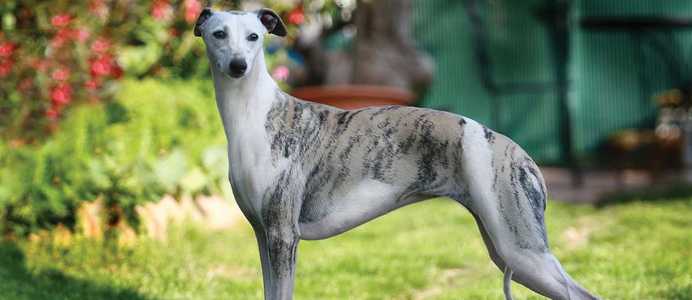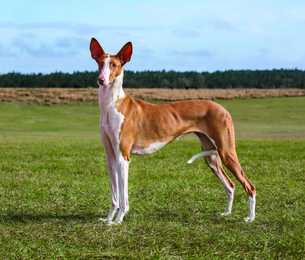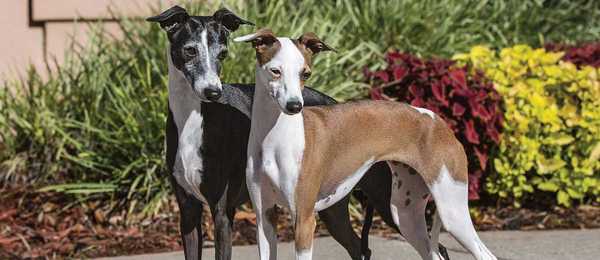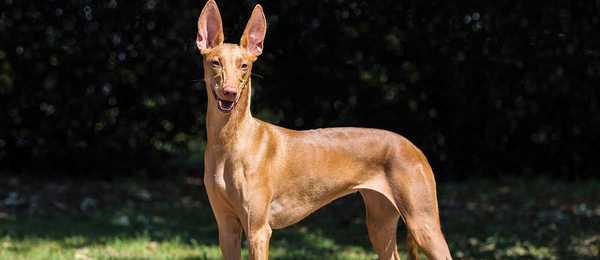
Traits and Characteristics
type
weight
height
family
The Whippet is among the sleekest of dogs, with a curvaceous, streamlined silhouette, long legs, and a lean physique. The Whippet is the ultimate sprinter, unsurpassed by any other breed in their ability to accelerate to top speed and to twist and turn with unequaled agility. They are similar to a lightweight version of the Greyhound, with an especially supple topline and powerful hindquarters enabling them to execute their double-suspension gallop. They are square or slightly longer than tall. Their gait is low and free-moving. Their expression is often keen and alert.
Ready to see what dogs fit you best? Take our short quiz to find out!
Energy Level
Exercise Requirements
Playfulness
Affection Level
Friendliness to Dogs
Friendliness to Other Pets
Friendliness to Strangers
Watchfulness
Ease of Training
Grooming Requirements
Heat Sensitivity
Vocality
Disclaimer: While the characteristics mentioned here may frequently represent this breed, dogs are individuals whose personalities and appearances will vary. Please consult the adoption organization for details on a specific pet.
Temperament
Perhaps the most outgoing and amenable of the sighthounds, the Whippet makes an ideal pet for people who want a somewhat quiet family member and devoted companion. The Whippet is often very gentle with children. They are calm indoors but loves to run and play in the yard. They are often very sensitive (both physically and mentally) and need to be treated and handled accordingly.
Upkeep
The Whippet can make a good apartment dog if they are taken for a long walk or run daily. Their grooming needs are minimal. The Whippet must have a warm, soft bed. They are very sensitive to cool weather and dislike and do not tolerate cold weather. Their hair is extremely short and fine, and the Whippet is virtually free of “doggy odor.”
Health
- Major concerns: none
- Minor concerns: none
- Occasionally seen: deafness, some eye defects
- Suggested tests: eye, cardiac, BAER
- Life span: 12–15 years
- Note: sensitive to barbiturate anesthesia; prone to lacerations
History
A medium-sized sighthound, the Whippet stems from Greyhound roots. The Whippet’s progenitors may have come from mixes between small Greyhounds and even smaller dogs, to be used by peasants for tracking rabbits and other small animals in the eighteenth century. Mixing with terriers who were adept at protecting farms from rodents were probably made to increase quickness.
It was the advent of the Industrial Revolution, however, that spurred the refinement of the Whippet breed that most recognize today. Masses of rural workers moved to industrialized areas, bringing with them their dogs and a need for entertainment. They found their dogs would readily race toward a waving rag. Rag racing became the sport of coal miners; in fact, the Whippet was dubbed the “poor man’s race horse.” A family’s Whippet was an immense source of pride. As a valued family member, they shared the family rations and often, the children’s beds, and came to be valued as a companion. After the Whippet was officially recognized as a breed in 1888, they began to be appreciated for their aesthetic appeal. The Whippet gained popularity slowly, but their unequaled combination of lithe elegance and gracious companionship gradually created a devoted following. Today the Whippet is the most popular of the sighthounds and a much loved family companion.



